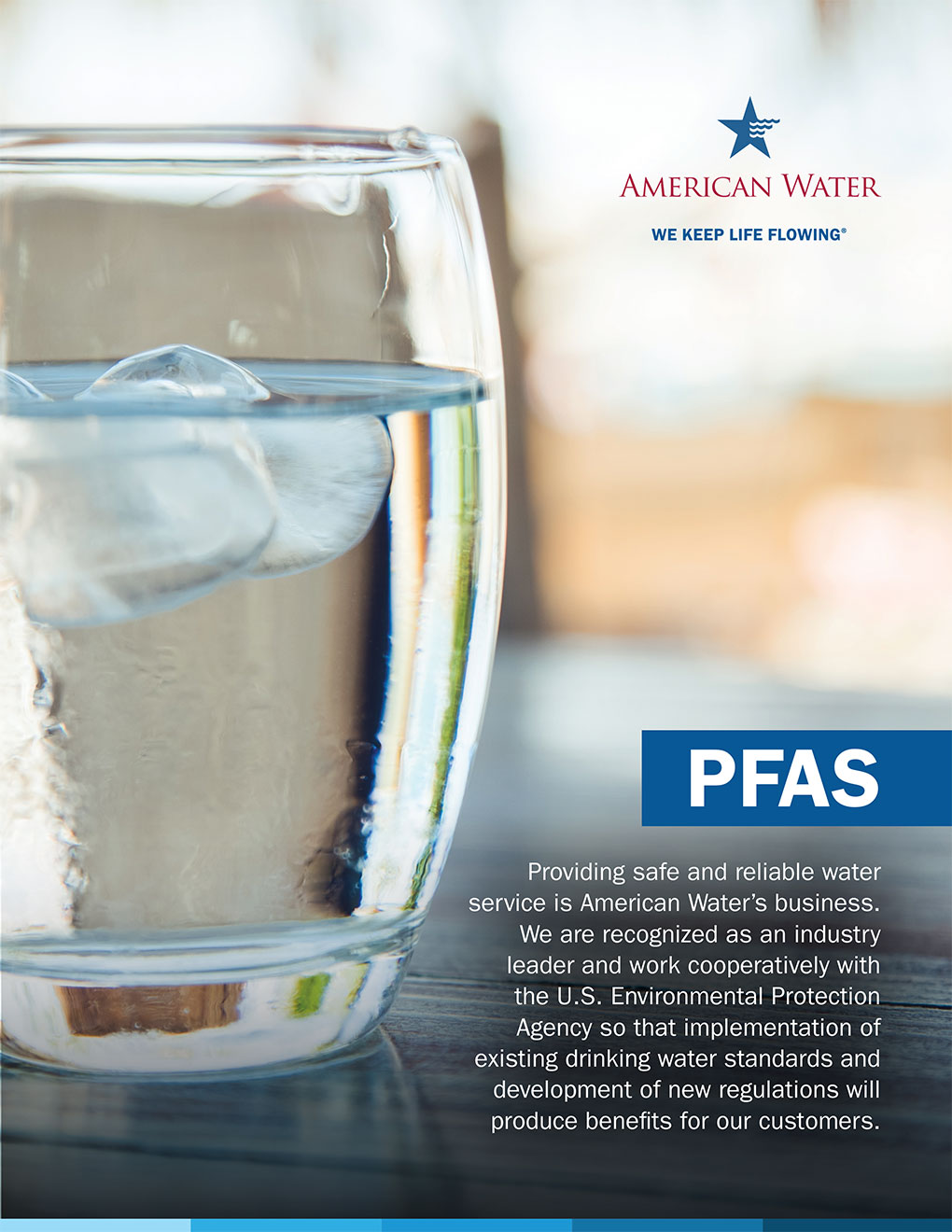PFAS and Your Water
Per- and polyfluoroalkyl substances (PFAS) are manufactured chemicals historically used in many household products including nonstick cookware (e.g., Teflon™), stain repellants (e.g., Scotchgard™), and waterproofing (e.g., GORE-TEX™). They are or were also used in industrial applications such as in firefighting foams and electronics production. There are thousands of PFAS chemicals, and they persist in the environment. Two well-known PFAS chemicals are perfluorooctanoic acid (PFOA) and perfluorooctane sulfonic acid (PFOS). These were phased out of production in the United States and replaced by hexafluoropropylene oxide-dimer acid (commonly known as GenX), perfluorobutane sulfonic acid (PFBS) and others.
Additional information on PFAS from the United States Environmental Protection Agency (U.S. EPA) can be found at https://www.epa.gov/pfas.
PFAS can be found in many consumer products. One way to reduce exposure is to think about what products you are buying and using.
- Buy products from companies who have committed to removing PFAS from their manufacturing.
- Be aware. Many companies are working to remove PFAS from their products; however, until the removal is complete, products including nonstick cookware (e.g.,Teflon™), stain repellants (e.g., Scotchgard™), and waterproofing (e.g., GORE-TEX™) may have PFAS. PFAS are also found in certain types of dental floss, nail polish, facial moisturizers, eye make-up, and more.
Here are a few PFAS ingredients to avoid:
- Polytetrafluoroethylene (PTFE)
- Perfluorononyl Dimethicone
- Perfluorodecalin
- C9-15 Fluoroalcohol Phosphate
- Octafluoropentyl Methacrylate
- Perfluorohexane
A good first step is to increase your understanding of how PFAS can enter our bodies, our homes and the environment. Ongoing education on PFAS and staying informed on federal and state guidance can help manage personal exposure.
Materials that help explain this are available from the Water Research Foundation. Another key action is to purchase products with less or no PFAS. This is hard because so many everyday products, from food packaging to carpets and raincoats, may have PFAS in them. Other products, like fertilizers and compost, may also have PFAS. Buying PFAS-free options will help decrease the amount of new PFAS entering the environment. A list of product types that may have PFAS, can be found at https://www.atsdr.cdc.gov/pfas/health-effects/exposure.html.
At the national level, the U.S. EPA has implemented drinking water standards for six PFAS and is gathering more information on these and other PFAS chemicals.
More information can be found at the U.S. EPA’s Final PFAS National Primary Drinking Water Regulation.
PFAS health effect information can also be found on the U.S. Centers for Disease Control and Prevention (CDC) website at https://www.atsdr.cdc.gov/pfas/healtheffects/index.html.
